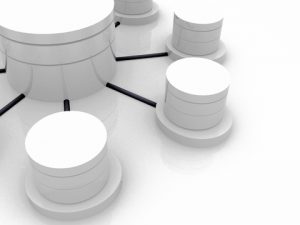What is data management and why is it important?
Data management is the art of getting the most out the information a company possesses and making sure that it is safe. Data management ensures
accurate, quality information in a safe and stable environment (and we could add “at the lowest cost possible”).
The second goal is to provide to users relevant and useful data analytics, easy to use statistical tools to users to get the most out of the available information. This often requires knowledgeable IT personnel and a bit of investment, but it’s getting easier and cheaper to do that, even for small businesses. It also requires a lot of data. If you’ve just implemented your ERP, wait at least a year or two before even thinking about using analytic tools or doing business intelligence.
What is data management and why is it important?
Data is the lifeblood of any modern enterprise. The more relevant information a company has, the more informed decisions the managers and employees can make. If you want a proof of the importance of data, pull the plug on the ERP at your company. In a matter of minutes, nobody knows what to do anymore.
Advantages of a good data management
A good data management policy will provide:

- Quality information
- Stability: safe and stable data throughout the whole data life cycle
- More value: more relevant information.
- Easier to maintain systems: a growing
database with a lot of junk is much harder to maintain. And the longer you wait to clean your databases, the hard it gets.
What is data management about?
A good data management policy will cover these four points:
A – Data accuracy – “Make sure it’s the right information”
Incorrect information isn’t worth anything. Worst, multiply inaccurate information in your systems and you may end up making decisions on misleading information.
B – Data quality – “Make sure it’s good and complete information”
Data quality is the relevance of the stored information. Employees have a lot of knowledge in their head. The more that gets into the system, the better it is. Encourage employees to use the system at their full potential and to put complete and quality information in them.
C – Data integrity – “Make sure the data stays the same”
Make sure the data in your systems stay the same throughout:
- Your different systems. For example, if you have two systems with customers information, make sure it’s the same
- the whole data life cycle. First, the information originates in the head of the employee, then it gets record in the ERP, then copied to backups and finally transferred to to long-term external storage at the end of its life. The same data will change medium a couple of times during its lifetime, make sure it stays the same throughout the whole process.
D – Data security
The security of the company’s information also has
to be ensured throughout the whole data life cycle. At each step, the
way it is secured is different:
Data management and data life cycle
Data management is not only managing data during its active life, but also during the whole data life cycle.
During active life
During the active life, the security of the data is based on the systems security options, both software and hardware. This is classic IT security:
- Access restriction: users have only access to the information they are entitled to and systems are secured from outside attacks
- Daily and weekly backups are scheduled and kept in a safe place (a bank security box is perfect). The servers systems are redundant to ensure there’s no data loss
Archiving stage
At the archiving stage, the data may be kept on a non-redundant server, but make sure that the access restrictions are still in place. It rarely worth it to keep an active security system on archives (creating new employee’s security right, updating current security, deleting outdated information, etc.), so it may be a good idea to delegate the task to someone – like an executive assistant – when confidential information is involved.
Long-term storage
Security also has to be considered for long-term storage. Even if the data is not readily accessible – data will probably be stored on an external media outside the enterprise – a security breach could still happen,
Make sure that the media is fit for long-term storage and that it is accessible only by authorized employees. If those backups are not encrypted,
make sure that the access to those tapes is severely restricted.
Note that saving this data on tape backups and putting them in a safety deposit box at the bank is one of the safest way to store long-term backups.
Final note
In the era of information, make sure you manage your data well. Good, quality data will result in better informed
decisions and greater productivity through better access to
information.
Now that you know what is data management, make sure you do it right by understanding the data life cycle and by building a data management policy
Home > Data Management Plan > What is data management
